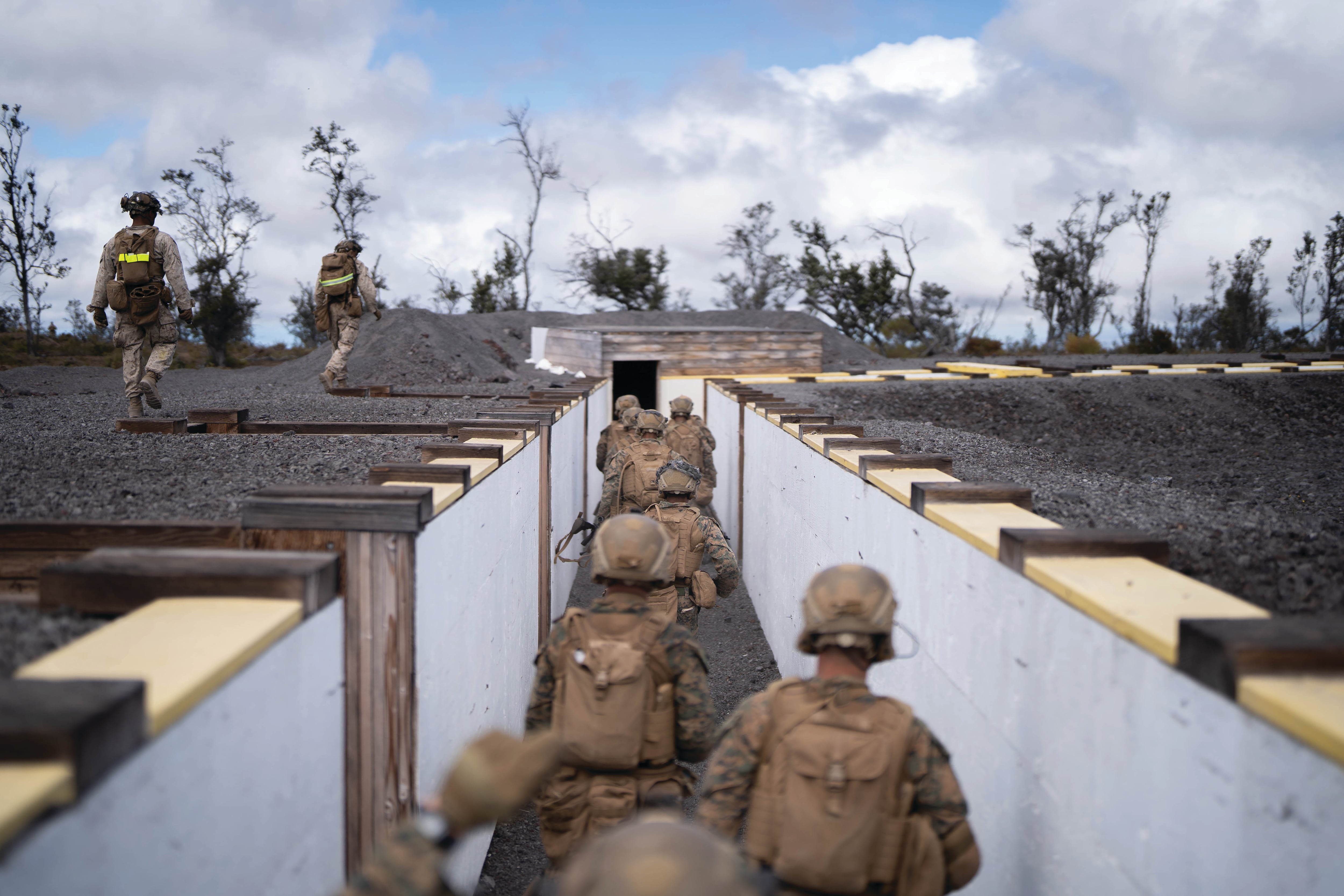The Marine Corps has requested an increase of $65 million for restoring subpar barracks ― but even the additional money would fall short of the total that the service has indicated it needs to fix the living facilities’ issues.
The Department of the Navy unveiled the increase Monday in a document summarizing its budget request for fiscal year 2025, which comes before Congress has even approved the military’s full fiscal year 2024 budget.
The Corps seeks to spend a total of $274 million, which includes the added $65 million, on barracks restoration in fiscal year 2025, Marine spokesman Maj. Kevin Stephensen said in a Monday statement to Marine Corps Times.
“In this time of hard choices and budget constraints, the USMC chose to add an additional $65M to barracks restoration which is one of the Commandant’s top priorities,” Stephensen said.
The Corps is now analyzing in detail how its facilities are being used, said Stephensen, who noted that barracks occupancy averages between 55% and 63%.
“Simply put, we have too many facilities and need to ensure we are making smart investments,” Stephensen said.
The $274 million will go toward the barracks the service knows that analysis won’t affect, according to Stephensen.
The Corps needs to spend closer to $1.5 billion per year on restoring and modernizing its barracks facilities to bring them up to a “good/fair” condition, according to an internal memo on Marine barracks modernization obtained by Marine Corps Times in January.
The Marine Corps has requested a $53.7 billion total budget for fiscal year 2025, up from $53.2 billion in the fiscal year 2024 request.
The Marine Corps estimated its backlog of deferred maintenance in its facilities amounts to more than $15.8 billion, according to Department of the Navy budget request documents. The service blamed its maintenance backlog on “service-level initiatives, increasing facility requirements, changes in national defense priorities, as well as delays and incremental funding for military projects.”
The backlog is so extensive that mere upkeep can’t address it, so the Marine Corps plans to focus on restoring, modernizing and replacing its facilities, according to the budget request documents.
Approximately 87,000 Marines live in the barracks, according to numbers provided a Marine Corps Gazette article in February by Maj. Gen. David Maxwell, the commanding general of Marine Corps Installations Command, and Maj. Nicholas Boivin, who was the general’s legislative aide at the time. As of March 2023, approximately 17,000 Marines lived in barracks that fell short of the military’s own standards regarding the privacy of the rooms and how they are configured, service officials told the Government Accountability Office.
That’s to say nothing of the Marines who are living with mold, inadequate hot water and other issues documented in the Government Accountability Office’s September 2023 report on the sorry state of the military’s barracks.
Seventeen percent of the Corps’ 658 barracks buildings are in “poor or failing condition,” Maxwell and Boivin wrote in the Gazette article.
Meanwhile, only 3% of Marines living in the barracks get new furniture each year, though the Corps wants to bump that to 10%, according to Maxwell and Boivin.
The state of the barracks, which generally house unmarried enlisted Marines up to the rank of sergeant, poses a barrier to keeping Marines in the service, leaders have acknowledged.
RELATED

The Marine Corps has promised to make fixing its barracks a priority.
In June 2023, the service officially promised Marines safe, secure barracks that meet health, environmental and safety standards and have “functional fixtures, furnishings, appliances, and utilities.”
Marine Commandant Gen. Eric Smith, who has named quality of life as one of his top priorities, said in October 2023 that he was committed to doing what he could to improve the barracks but that the problems would take about a decade to resolve.
The Marine Corps’ Barracks 2030 initiative calls for consolidating Marines into the best barracks buildings, putting civilians in charge of managing barracks, responding to maintenance requests more quickly, replacing furniture more regularly and considering privatized options.
The Corps said in February it was requiring inspections of every single barracks by leaders from outside the chain of command. The inspections are supposed to give the service “a good baseline understanding of the condition of all our barracks so we can identify and allocate resources accordingly,” according to Assistant Commandant Gen. Christopher Mahoney.
But money is tight, Mahoney acknowledged in February.
Maxwell and Boivin wrote in the Gazette article about Barracks 2030, “During a period of budget uncertainty, these solutions will be done at a tempo that allows for the prudent use of taxpayer dollars.”
“The Marine Corps cannot overcompensate with significant sums of money that cannot be spent smartly and risk investing in the wrong initiatives because it must spend money now,” they wrote.
Irene Loewenson is a staff reporter for Marine Corps Times. She joined Military Times as an editorial fellow in August 2022. She is a graduate of Williams College, where she was the editor-in-chief of the student newspaper.





